Savory is a spicy herb that can be used to add flavor to dishes.
It is used in many different dishes and recipes to add flavor and depth. You can use it to season meat, soups, and even french fries.
But what if you’re out of savory? Are there any good savory substitutes that you can use?
Well, you’re in luck as there are many substitute for savory that are easier to find and you can use in your recipe.
You can use these savory substitutes as a dry rub or a marinade, as well as add them to soups, stews, and sauces for an earthy flavor.
Table of Contents
7 Best Substitute for Savory
The best substitute for savory are thyme and sage. You can also use oregano, winter savory, and marjoram as substitutes for dried savory in most recipes.
Keep on reading to know how you can bring the original flavoring with these handy substitutes for savory as well as to know the answers to some of the most asked questions related to savory.
1. Thyme

Thyme is a fragrant herb that can be used as a summer savory substitute. This herb has a delicate flavor, and you can use it to season meats, chicken dishes, soups, vegetables, salads, and egg dishes.
You can also add thyme to mashed potatoes or sprinkle it on top of the bread. Thymes leaves are small and flat with tiny, pink flowers. This herb can be used fresh or dried, but the flavor is much stronger when it’s dried.
2. Sage

Sage has a woodsy taste that pairs well with meats and hearty stews. It has larger leaves than other savory herbs, and you can use it for long-cooking recipes and pair it with potatoes. It is a perfect savory spice substitute.
3. Oregano
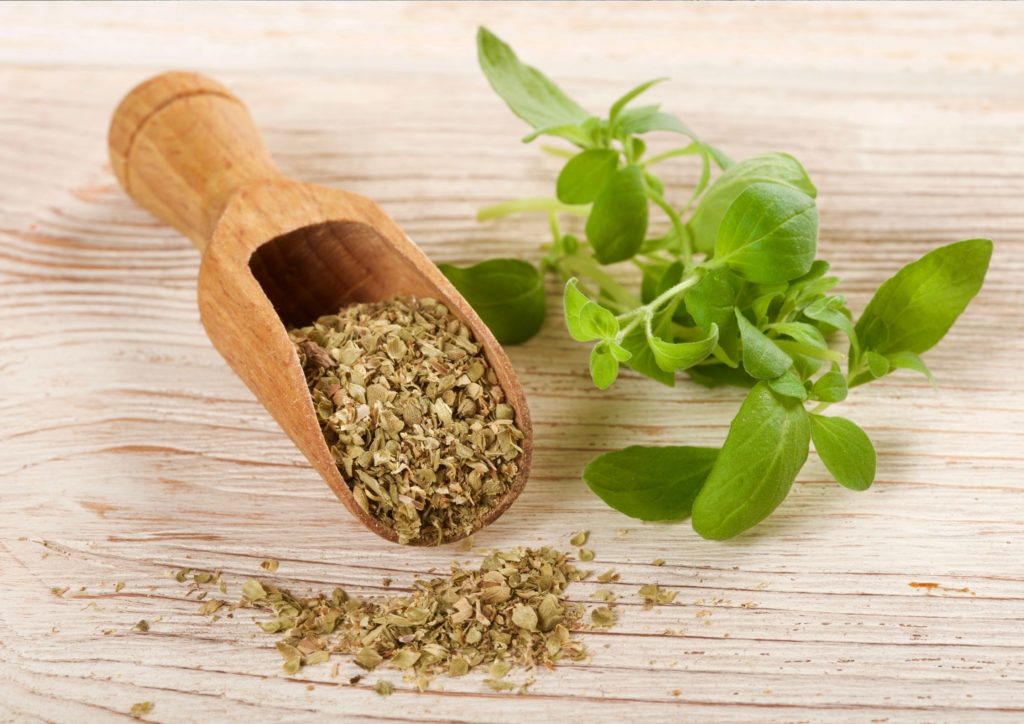
Another popular savory herb substitute is oregano. Oregano has an aromatic, pungent flavor that goes well in tomato sauces, baked vegetables, soups, bread, pizza, and salads.
The leaves are small but have a strong aroma. You can use fresh oregano for long-cooking recipes and use it for pizza.
4. Winter Savory
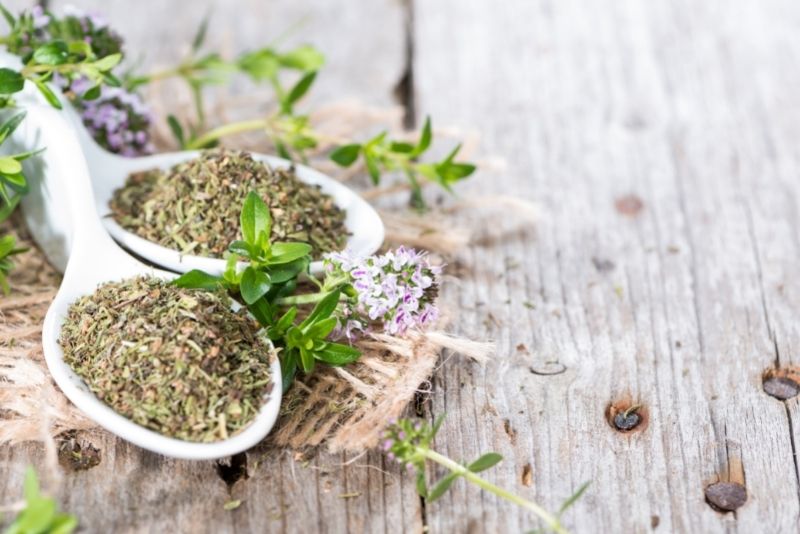
Winter savory is a sweet, milder version of savory herb. It has small leaves that are about 4 inches in length with tiny flowers on them.
This herb can be used to flavor egg dishes, stews, and meats such as pork, poultry, and beef. You can also sprinkle it on vegetables, potatoes, and soups to enhance their flavor.
5. Marjoram
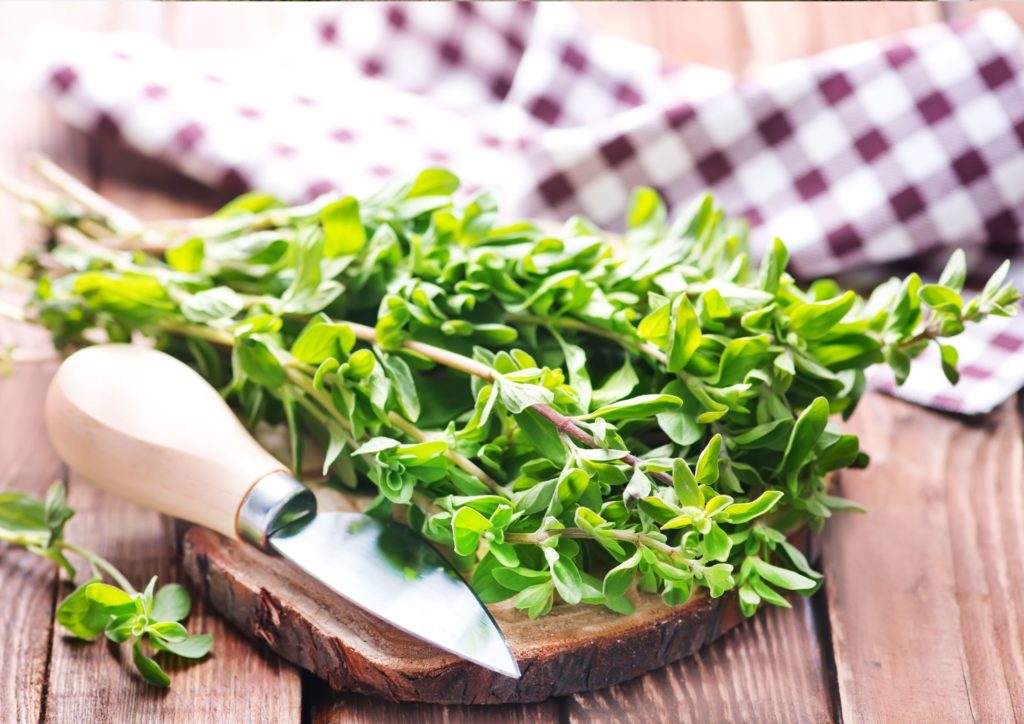
Marjoram is a fragrant herb that offers an earthy, sweet flavor. It has tiny leaves with small clusters of flowers at the top.
This herb pairs well with beef dishes, tomato sauces, salads, soups, vegetables, and stuffing. You can use this herb in moderation because it is very strong.
6. Basil
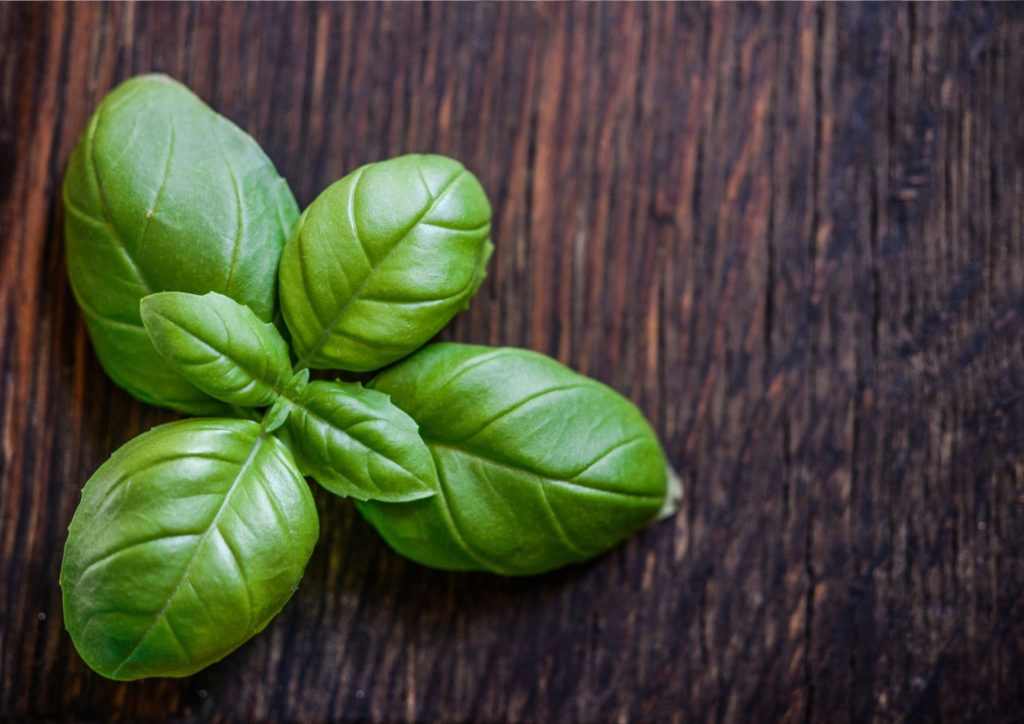
Basil is a tender Mediterranean herb with a sweet aroma that pairs well with tomatoes and other Italian flavors.
You can use fresh basil to flavor pasta, pizzas, sauces, and meat dishes such as pork or poultry. It can also be added to salad dressings, vegetable dishes, and soups.
7. Rosemary

Rosemary is similar taste-wise to the savory herb. This herb has a pinelike aroma that pairs well with roasts, potatoes, chicken, and pork dishes. You can use it fresh or dried in your cooking for a strong flavor.
You can also use the leaves to give your salad a fresh taste, especially if you use vinegar and olive oil as your dressing.
What is Savory?
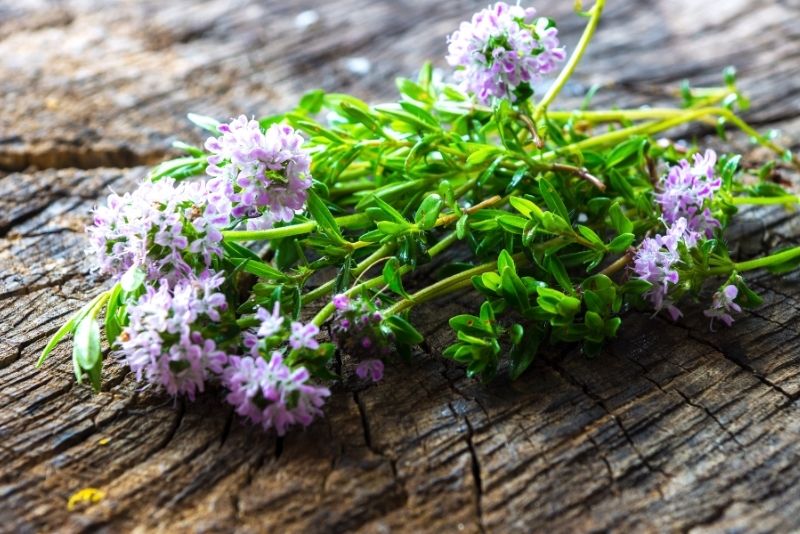
The savory herb is a pungent spice that can be used in various recipes to provide flavor and a unique scent. It has been described as a combination of herbs such as basil, mint, and sage.
Savory is used in many different recipes including rice, soups, stews, and meats. It can also be used to season steaks, chops, and fish, making it great for grilling.
This herb can be used in baked goods, broths, beef stew, and fish. It is a good substitute for sage if you do not have it on hand.
Frequently Asked Questions
What does savory taste like?
Savory is typically described as having a peppery, minty, and slightly sweet flavor. The leaves are tiny with an aromatic, savory taste and smell. It has a peppery scent and is considered one of the most pungent herbs.
It is often used to add depth of flavor to soups and stews. Additionally, savory can be used as a seasoning for meats such as chicken, pork, and beef. It tastes better with butter or olive oil than when it’s cooked alone. Savory will add flavor to your dishes without being overpowering.
What is a savory seasoning made of?
Many see savory herbs as a seasoning mix that is made up of different herbs. This mixture includes savory, thyme, sage, marjoram, and sometimes rosemary and bay leaf.
These herbs are mixed together and stored in an airtight container to preserve their flavor until you’re ready to use them. When making your own seasoning, you may want to store them in the freezer to help prolong their flavor.
What are the types of savory?
There are many types of savory. However, summer savory and winter savory are most commonly used.
It is called summer savory because it grows well in the warmer months. Summer savory is also called knotted marjoram. It has a milder, sweeter flavor than the winter savory. This herb is often used for meats and vegetables, and it can be added to dressings, bread, stocks, and teas.
Summer savory has tender leaves, and it adds a delicate, sweet flavor to your dish. It doesn’t have the spicy or peppery taste like other savory herbs.
This herb is also used for cooking in baking recipes such as biscuits, muffins, cake mixes, pastries, and pies. Summer savory can also be sprinkled on top of popcorn!
Winter savory is also known as mountain savory and is not related to the winter savory plant. It has a stronger flavor than summer savory and can be used in many of the same ways.
What is the difference between winter savory and summer savory?
Winter savory and summer savory are similar in taste, aroma, and appearance. They both come from the same herb plant but have different growing seasons.
Summer savory is an annual herb while winter savory is a perennial herb. Summer savory has a more delicate flavor than winter savory. They can be used interchangeably in recipes, but if you want a more intense flavor, use winter savory.
Fresh vs dried savory
Dried savory is more pungent than fresh, and it will lose its flavor quickly if not stored properly. Fresh savory will keep for longer periods of time, but you may need to use more of it to achieve the flavor you desire.
Savory can be purchased fresh or dried, and there are some differences in flavor when using one over the other.
Is savory the same as marjoram?
No, savory is not the same as marjoram. Marjoram is a sweeter herb while savory is more pungent. They can be used interchangeably in recipes, but you may want to adjust the amount of each herb to get the desired flavor.
In terms of looks, they are very similar. Savory is much stronger in taste than marjoram. It’s best to use marjoram in moderation because it isn’t as strong as savory but still has a pungent flavor.
Marjoram gives food a sweet, nutty taste while savory will give your food a peppery kick.
Why is savory popular?
Savory is popular because it has a complex and pleasant flavor that can be used for many different recipes. It goes well with meats, potatoes, and eggs.
Plus, you can use savory to season vegetables, soups, cheese dishes, pizza, meat sauces, stuffing, stews, and pies.
How do you store savory?
You should store your fresh herb in the refrigerator in a sealed container or place it in an airtight bag placed in the freezer.
Final Words
Savory is an herb that has a complex, peppery flavor. It can be used in many dishes like vegetables, soups, and cheese dishes as well as pizza, meat sauces, stuffing, and stews.
But, if you are out of savory, don’t worry. There are many herbs that you can use as a substitute for savory.
You just have to figure out which ones will add flavor, aroma, and taste to your dish the way that savory does.
After all, cooking with herbs can be tricky. Certain herbs have distinct flavors and aromas that may not always mesh well together.
Choosing the right herb for the job is key to making a delicious dish, but it’s hard to know which one will work best without experimenting first. So, go ahead, and do your own experiments.